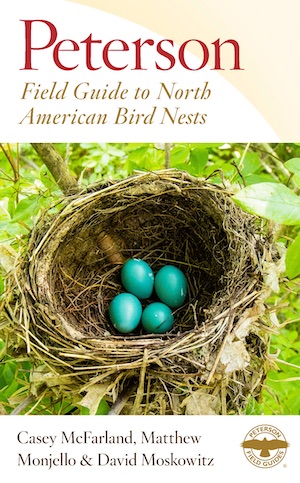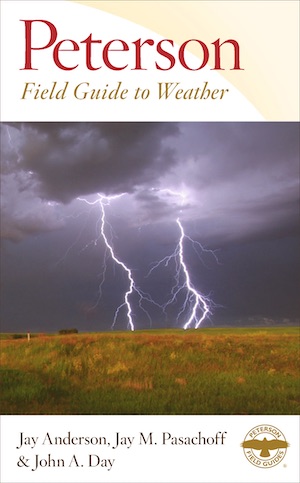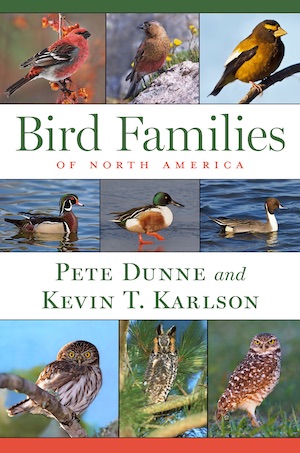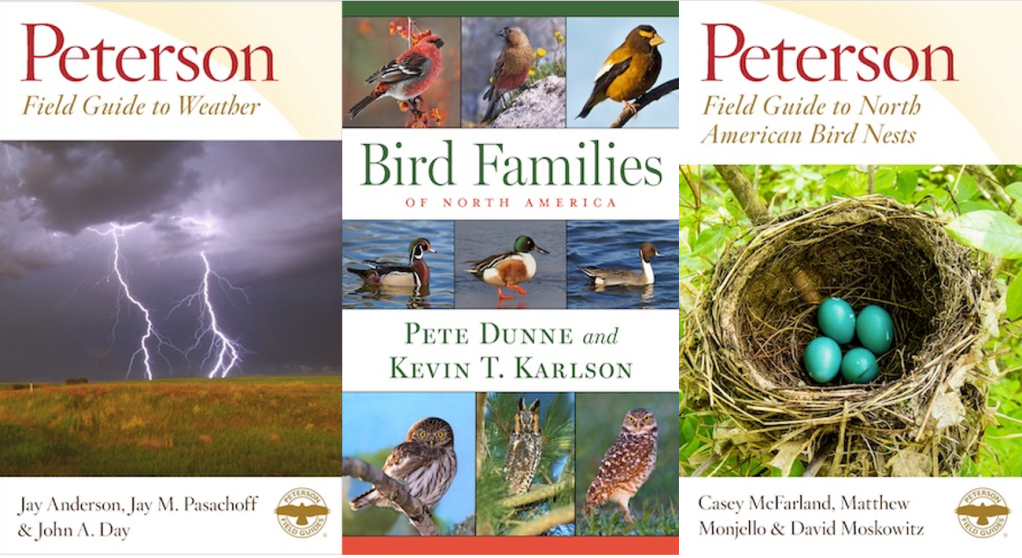Last week, my neighbor texted me a picture of an unidentified animal scat from his hike. He wanted an ID, and he knew that I have more field guides than I can count, including one for scat and tracks.
Longtime readers of Cool Green Science know that we’re hardcore fans of field guides. They’re treasure troves of information for the curious naturalist, and, as CGS writer Matt Miller writes in his essay about his lifelong love of field guides, they “also serve as invitations to adventures, as memories of days afield, even as a source of solace when I can’t be outside.”
Here are three great new field guides that will teach you everything you’ve ever wanted to know about weather phenomena, how to identify bird nests, and the ins and outs of the bird families of North America.
For more field guide reviews and recommendations, check out our list of 10 Field Guides for the Serious Naturalist. (And, if you want even more field guides, our list of 10 More Field Guides and References for the Serious Naturalist.)
-
Peterson Field Guide to North American Bird Nests
By Casey McFarland, Matthew Monjello, & David Moskowitz

How many times has someone asked you: “What bird made that nest?” Well, now you might be able to answer them.
I’ve been a serious birder for 10+ years, and I’ll admit that my knowledge of bird nests is abysmal. Bald eagle nests are really, really big. Hummingbird nests are really, really small. Woodpeckers nest in cavities. And Carolina wrens will nest in anything. That’s pretty much all I know.
The Peterson Field Guide to North American Bird Nests is an invaluable resource for birders looking to up their nest-ID game. The guide is organized taxonomically and packed with high-quality photos, along with detailed descriptions of nest size, shape, materials, design, location, and appearance of the eggs. I found the inclusion of species range maps particularly helpful, for those moments when I can’t exactly remember if I’m within the breeding range of a particular species.
I’ll note that looking at a nest and pinpointing the exact species that built it isn’t an easy, foolproof process. Like identifying bird species, it takes considerable practice and observation. That said, this guide is the perfect resource to help you tackle any nest-ID challenge.
-
Peterson Field Guide to Weather
By Jay Anderson, Jay Pasachoff, & John A. Day

This is one of those field guides that I never knew I needed, but now I can’t imagine not having it on my bookshelf.
The Peterson Field Guide to Weather is part field-guide, part pocket-sized atmospheric science textbook… but don’t let that intimidate you if you’re just looking for a refresher on your basic cloud shapes. Different chapters focus on the fundamentals: the atmosphere, clouds (including the more unusual ones), satellites, global winds, weather systems, extreme weather events, and the history of meteorology.
It’s the perfect quick-grab resource for all of those things you learned in high school science, but can’t remember: Why do weather systems come from the west? What is El Nino, again? Why does the US have so many tornadoes? How do rainbows form?
You can use it like a true field guide, to quickly reference information when you need it, or read it cover-to-cover.
Note: Many of the diagrams, maps, and examples in the weather systems chapter focus on North America, but the rest of the guide is excellent for weather anywhere in the world.
-
Bird Families of North America
By Pete Dunne & Kevin T. Karlson

If I’m honest, my first thought when seeing this book was, “Really? A whole guide on bird families?” I’m a compulsive field guide collector, but even I thought that this one might be a bit much. I was wrong.
As the authors point out, most bird guides (and most birders) focus on identifying one species from another. But they pay far too little attention to what sets birds families apart. For example, what makes a vireo a vireo, when they’re so similar to warblers?
One of my favorite things about this book is that the descriptions of each bird family don’t focus explicitly on the North American species. (We’re all familiar with our beloved belted kingfisher, but did you know that not all kingfishers eat fish? But they do all have a similar body plan.)
This book also helped me clean up some of the lazy taxonomic shorthand that I’d picked up by focusing too much on species-level identification. For example, I used to think that most North American raptors could be neatly lumped into accipiters (those pesky sharpies and coopers!) and buteos (hello, red-tailed hawk). But that’s not quite correct. Thanks to this guide, I learned that the entire family of diurnal raptors is called Accipitridae, which also includes both the accipiter and buteo genus.
So if you think you have more bird guides than you need, think again. This one will help you put your favorite species in context and teach you a few new facts along the way.




Perfect! Think this will take care of several Christmas gifts. (Plus a couple for me!) My family are all birdwatchers. And we are all weather geeks, living in a place that gets weather from five directions: it makes for interesting and constantly changing weather. Since we can’t change that, we enjoy watching it. We will be having fun with this. Thanks for the tips.